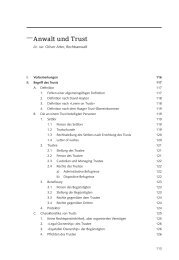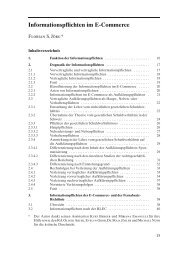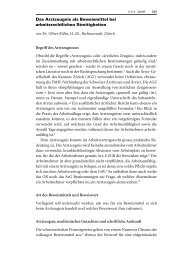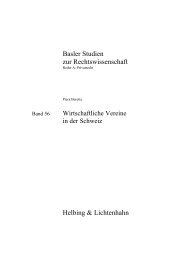Rechtliche Aspekte der Musikindustrie
Rechtliche Aspekte der Musikindustrie
Rechtliche Aspekte der Musikindustrie
Sie wollen auch ein ePaper? Erhöhen Sie die Reichweite Ihrer Titel.
YUMPU macht aus Druck-PDFs automatisch weboptimierte ePaper, die Google liebt.
A LESCH S TAEHELIN<br />
minimis only if the average audience would not recognize the appropriation.<br />
See id. at 434 n. 2 ("[A] taking is consi<strong>der</strong>ed de minimis only if it is<br />
so meager and fragmentary that the average audience would not recognize<br />
the appropriation."). This observation reflects the relationship between the<br />
de minimis maxim and the general test for substantial similarity, which also<br />
looks to the response of the average audience, or ordinary observer, to<br />
determine whether a use is infringing. To say that a use is de minimis because<br />
no audience would recognize the appropriation is thus to say that<br />
the use is not sufficiently significant.<br />
On the facts of Fisher, this court rejected the de minimis defense because<br />
the copying was substantial: the defendant had appropriated the<br />
main theme and lyrics of the plaintiff's song, both of which were easily recognizable<br />
in the defendant's parody. Specifically, the defendant copied<br />
six of the thirty-eight bars to the 1950s standard, "When Sunny Gets<br />
Blue", to make the parody, "When Sonny Sniffs Glue", and paralleled the<br />
original lyrics with only minor variations. Id. However, despite the works'<br />
substantial similarities, we held that the use was nevertheless non-infringing<br />
because, as a parody, it was "fair use" un<strong>der</strong> 17 U.S.C. § 107. We explained<br />
that the defendant's successful fair use defense precluded a finding<br />
that the use was insubstantial or unrecognizable because "the parodist<br />
must appropriate a substantial enough portion of [the original] to evoke<br />
recognition." Id. at 435 n. 2.<br />
This case involves not only use of a composition, as was the case in<br />
Fisher, but also use of a sound recording of a particular performance of<br />
that composition. Because the defendants were authorized to use the<br />
sound recording, our inquiry is confined to whether the unauthorized use<br />
of the composition itself was substantial enough to sustain an infringement<br />
claim. Therefore, we may consi<strong>der</strong> only Beastie Boys' appropriation<br />
of the song's compositional elements and must remove from consi<strong>der</strong>ation<br />
all the elements unique to Newton's performance. Stated another way, we<br />
must "filter out" the licensed elements of the sound recording to get down<br />
to the unlicensed elements of the composition, as the composition is the<br />
sole basis for Newton's infringement claim.<br />
In filtering out the unique performance elements from consi<strong>der</strong>ation,<br />
and separating them from those found in the composition, we find substantial<br />
assistance in the testimony of Newton's own experts. Because we<br />
are reviewing a grant of summary judgment in favor of the Beastie Boys,<br />
we must view the evidence in the light most favorable to Newton and affirm<br />
only if there is no genuine issue of material fact. Newton's experts,<br />
38






